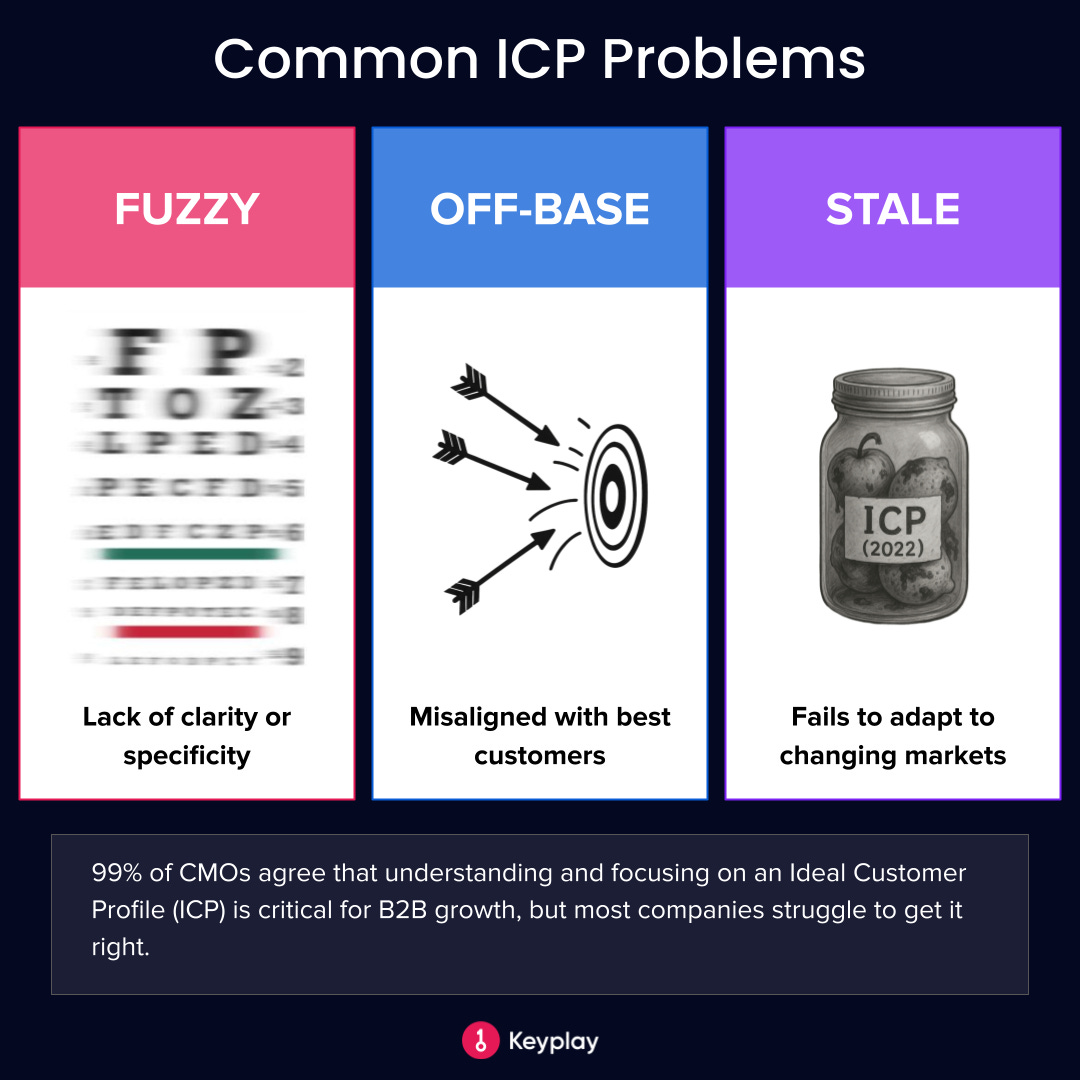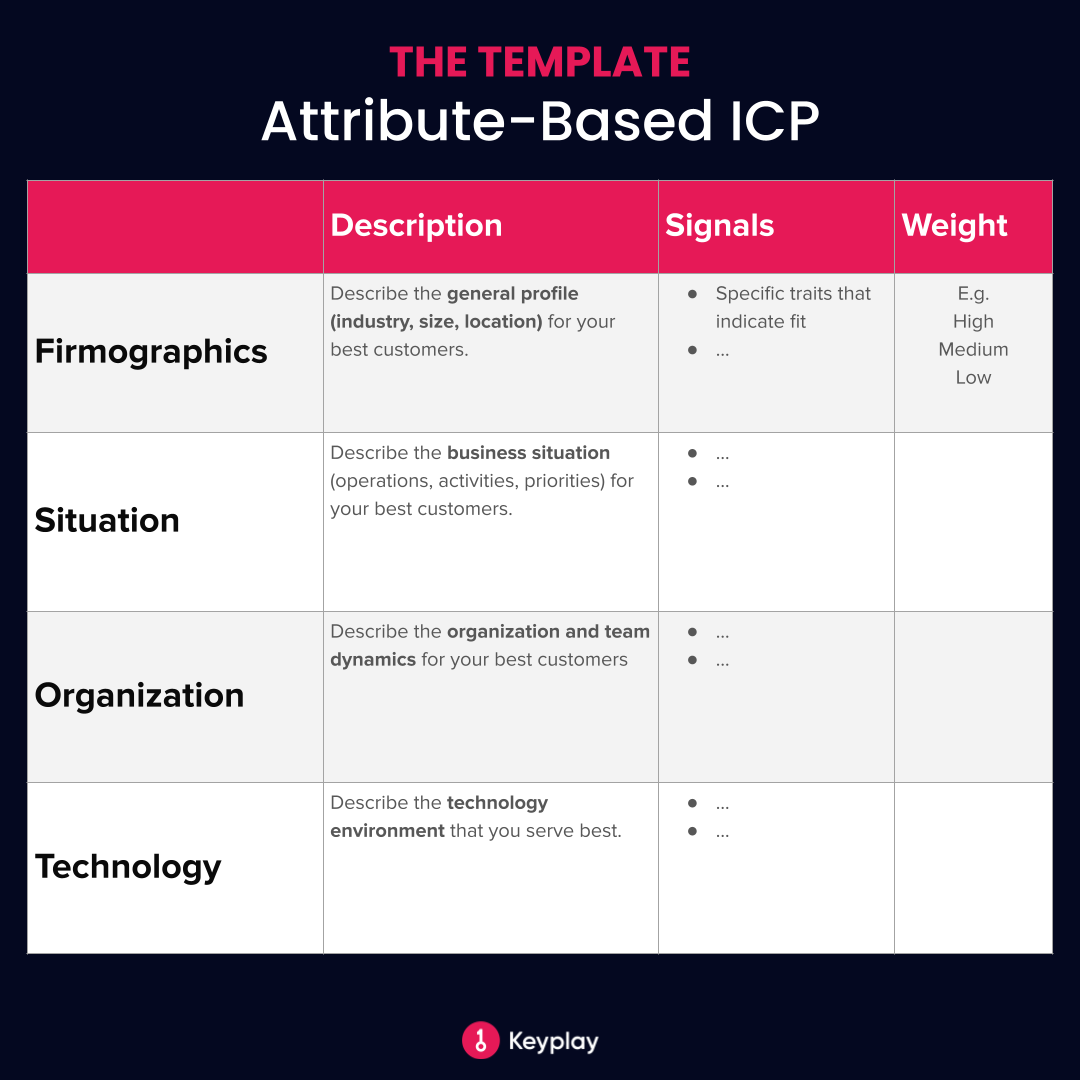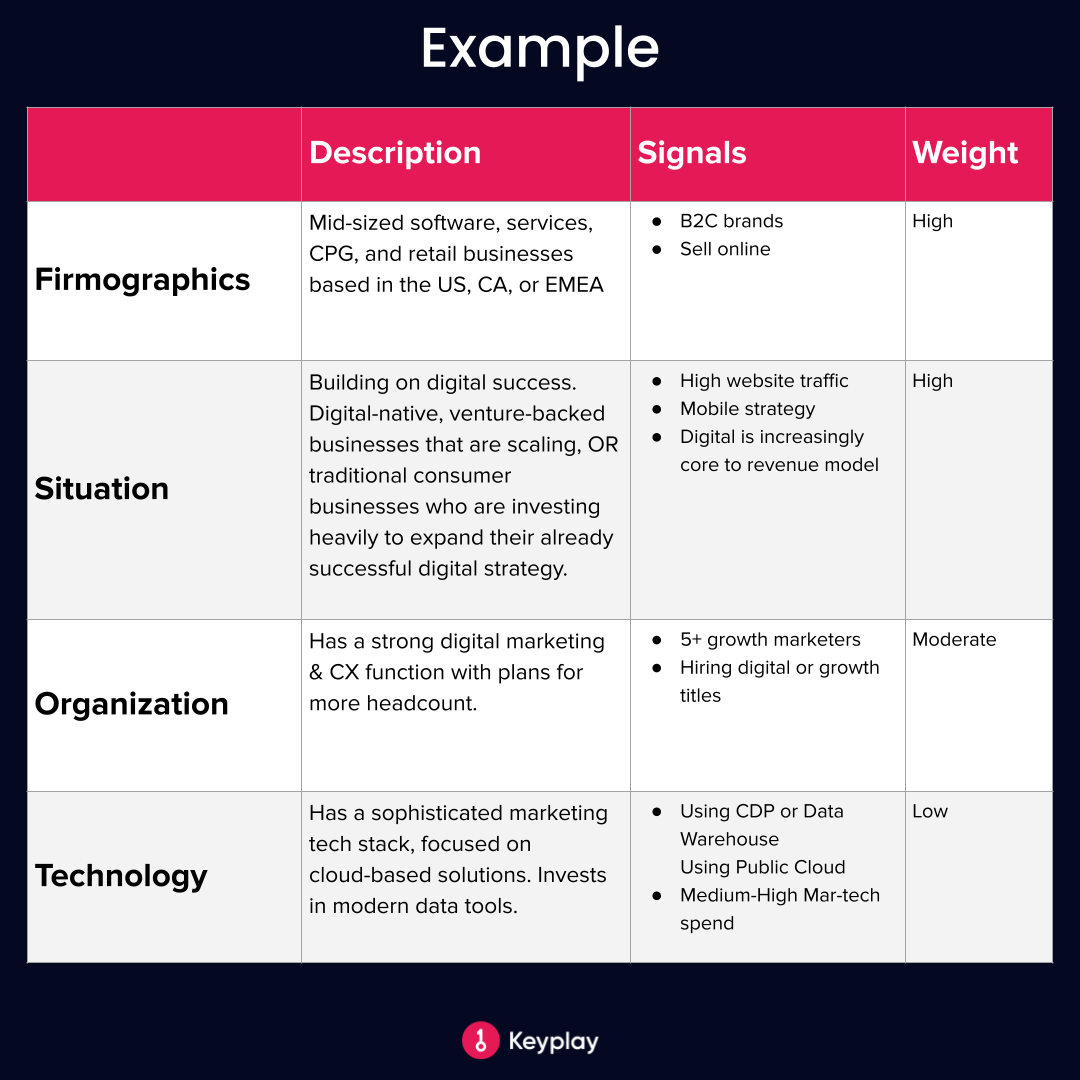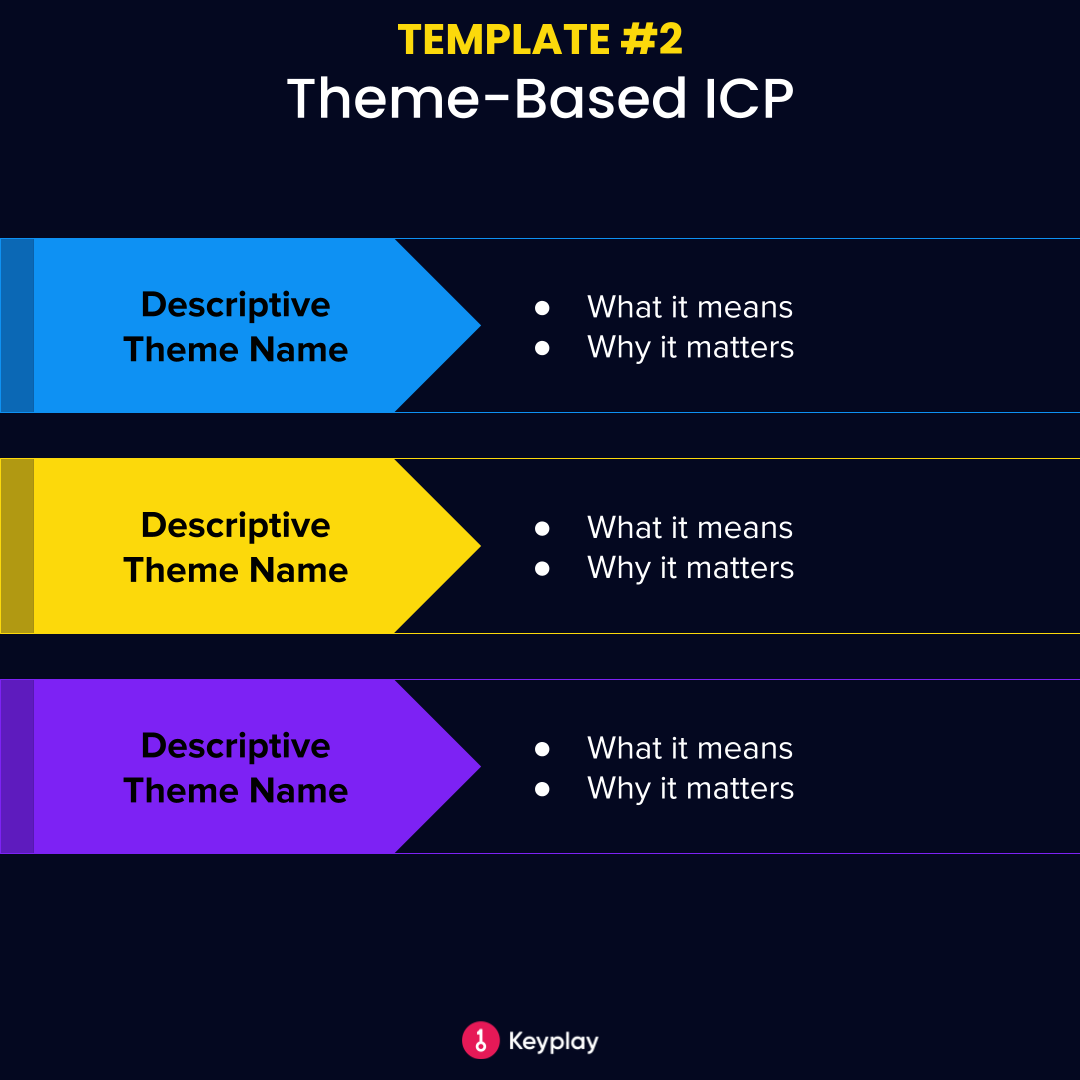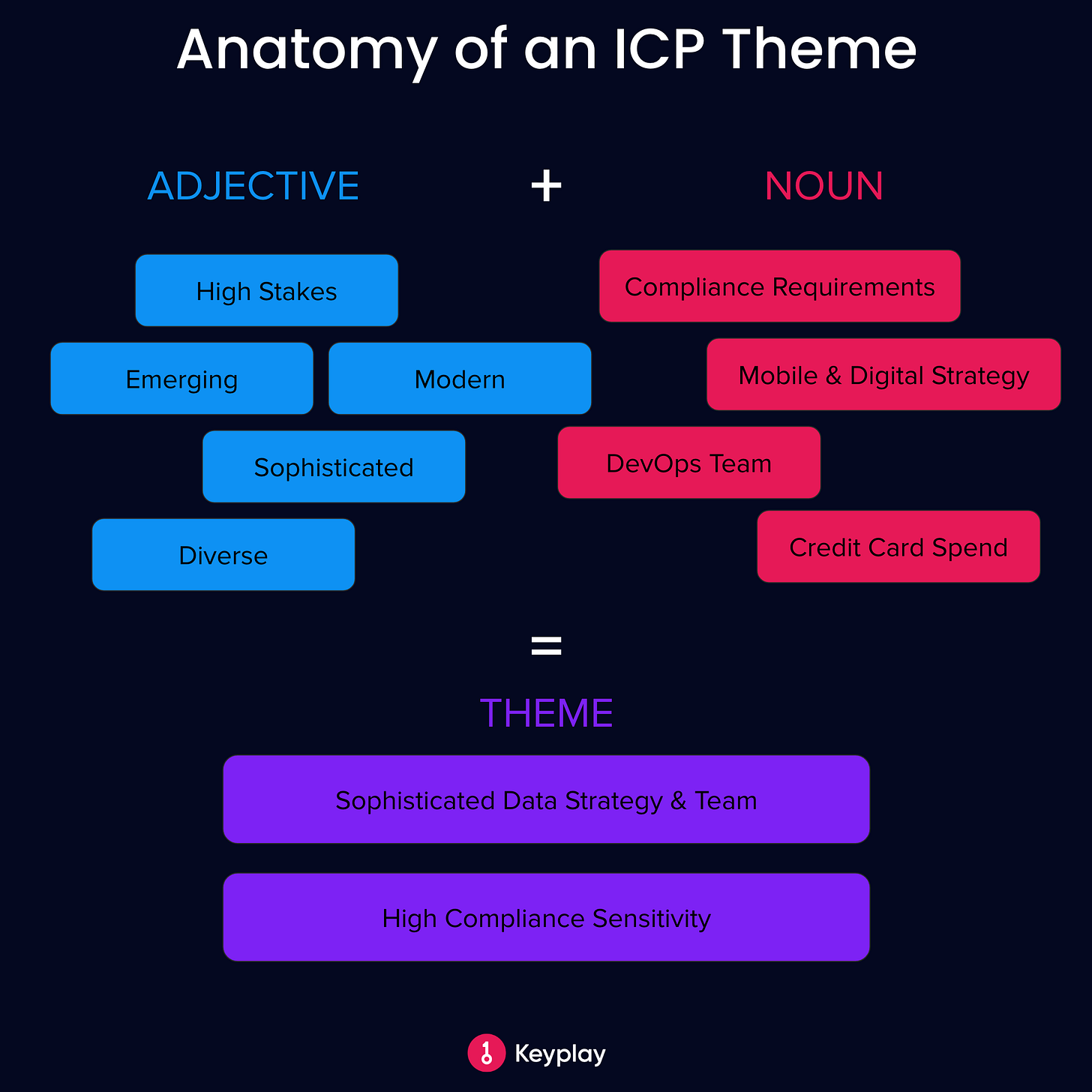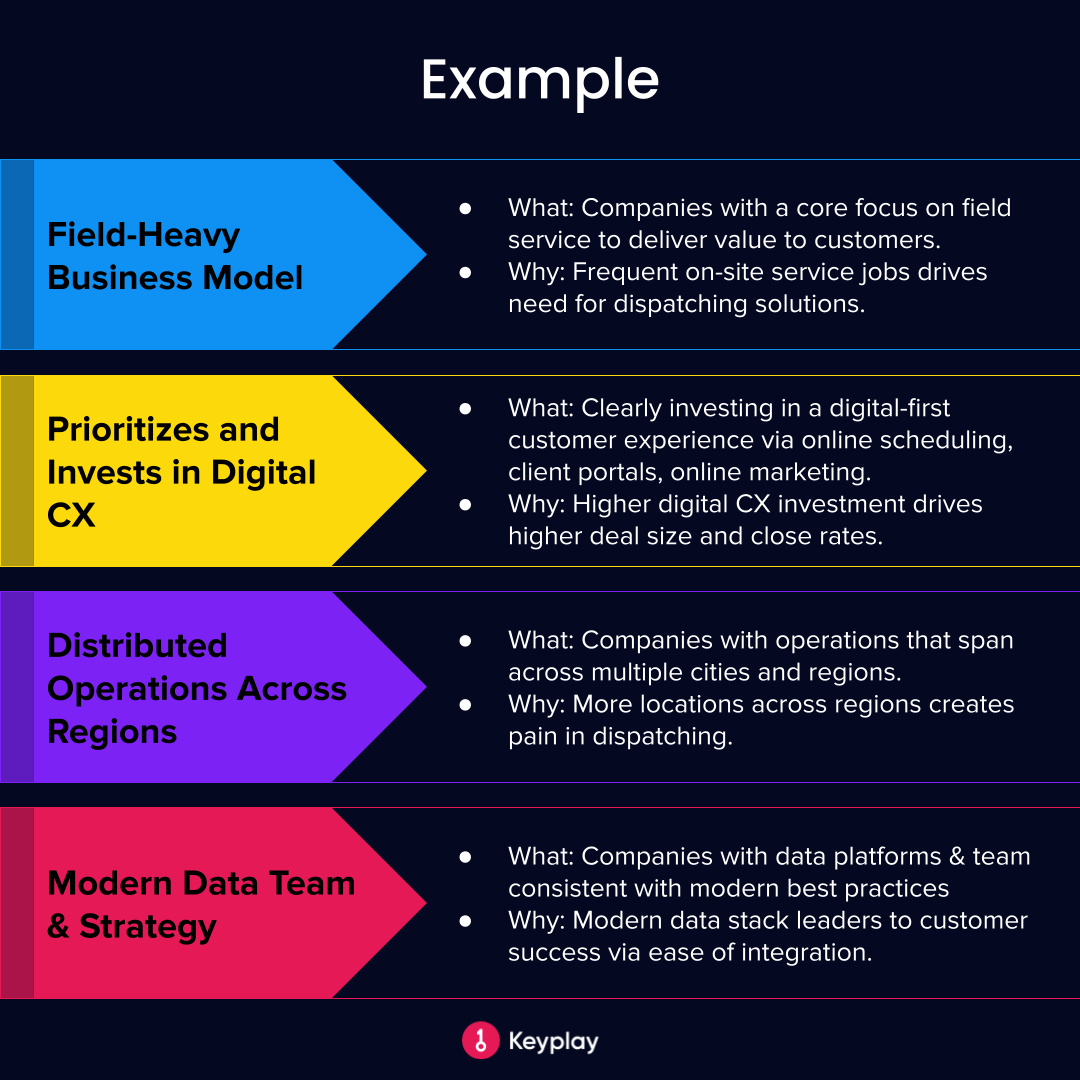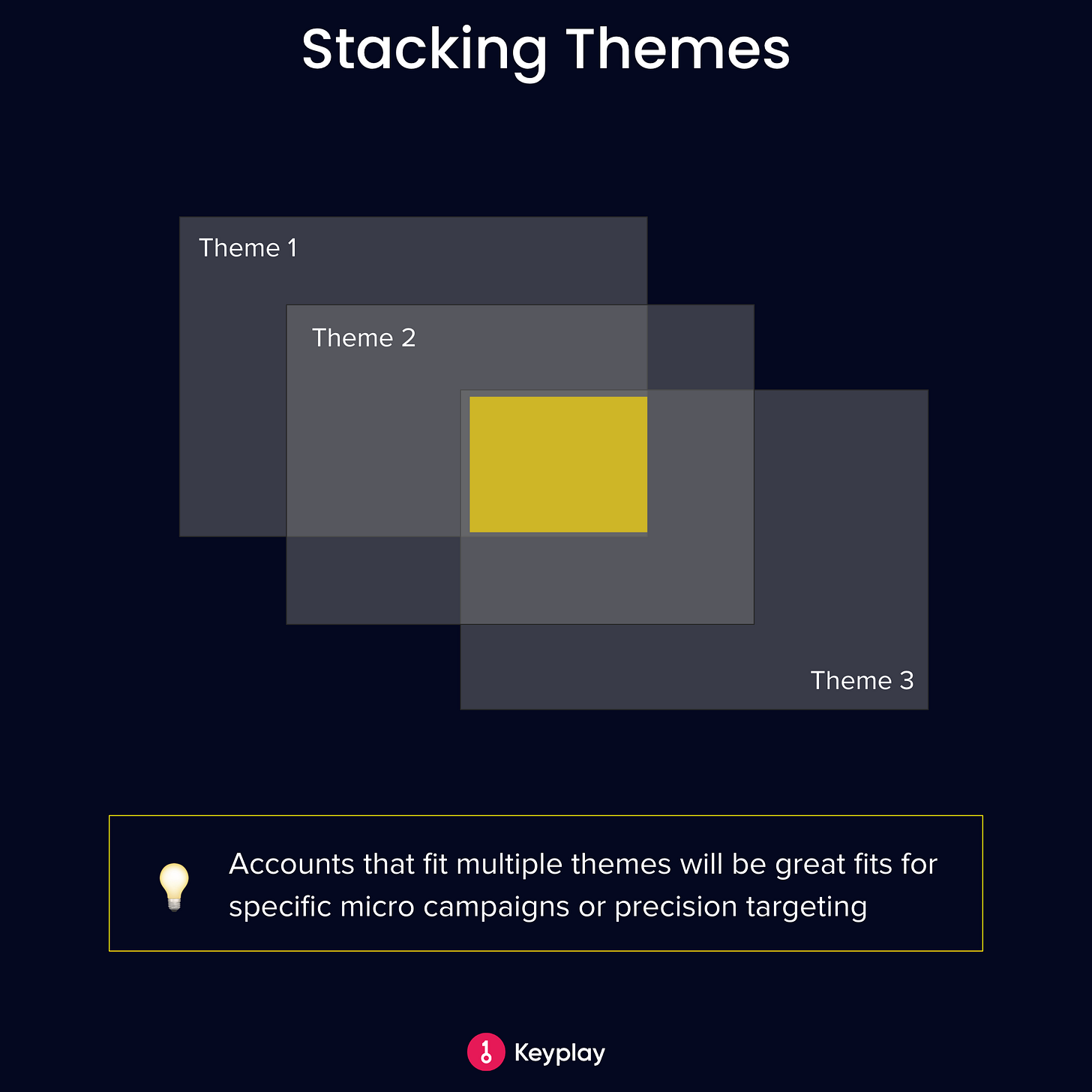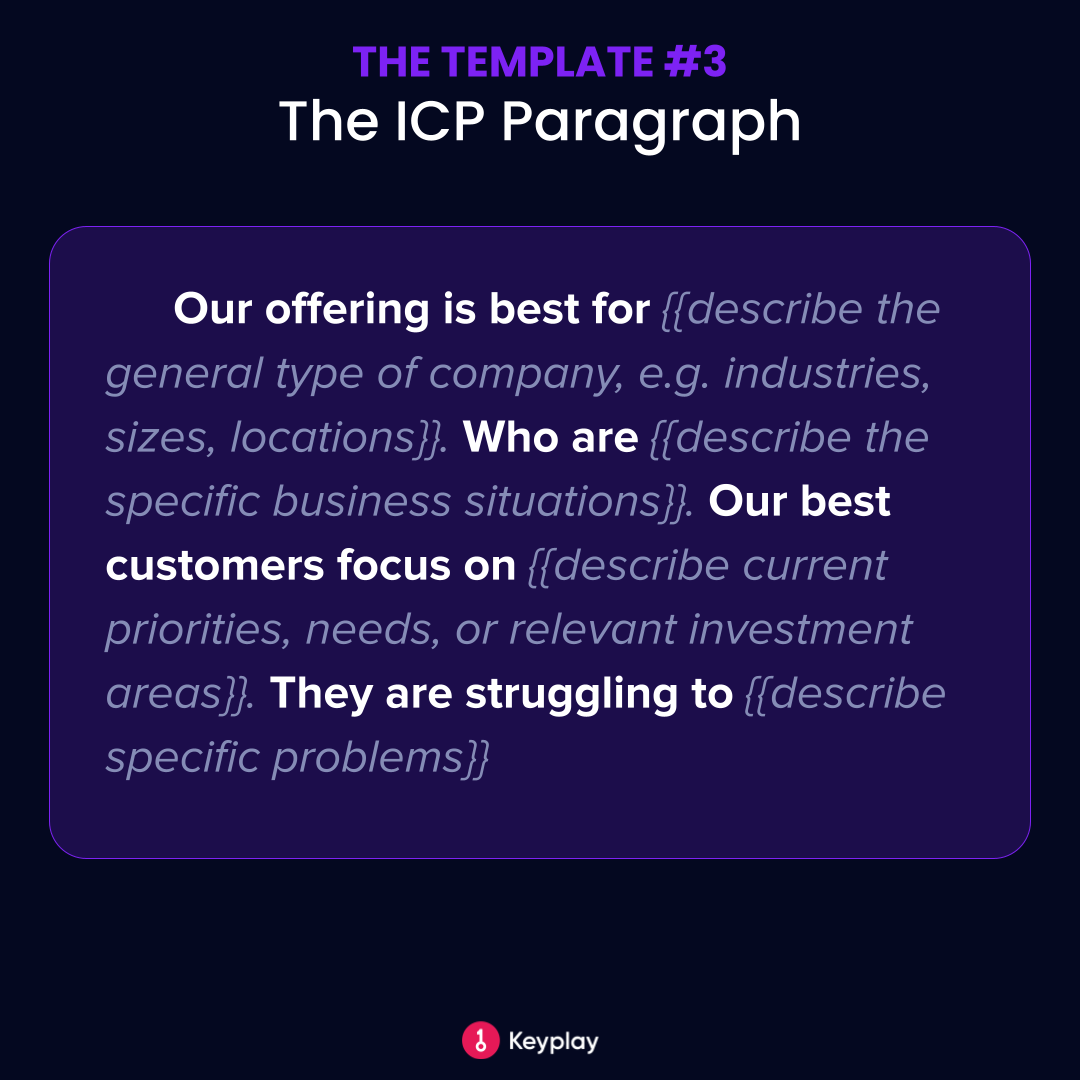This newsletter is sponsored by my company, Keyplay. It’s AI for ICP targeting. We work with some of the smartest leaders in B2B to “solve for NRR at the targeting level” (as one CMO described it). Learn more here.
Lots of templates examples in this post. If you prefer to get these frameworks in slide deck format, go here.
99% of B2B companies want to focus on their ICP.
But how many actually have a clear, documented ICP definition that everyone in sales & marketing can understand (and agree on)?
Definitely less than 99%.
Most companies have some intuitive definitions, but they’re too fuzzy, off-base, or stale to enable any *real* alignment.
Without alignment at the definition level, it’s no wonder there’s misalignment downstream.
Mismatched account lists, marketing celebrating MQLs that don’t convert, churn, and CS problems… can all be traced back to unclear and unspecific ICP definitions.
This post covers 3 practical ICP definition frameworks to help align your sales & marketing and the right targets.
1.) Attribute-Based ICP
This is the most common approach. Traditionally, it’s been based on generic firmographics and technographics. The same framework applies today, but with modern AI, you can get much more specific and precise.
This structured approach breaks down customer attributes into four key categories:
Firmographics
Situation
Organization
Technology
For each category, you define what makes a customer ideal, identify supporting signals, and assign a relative weight.
How it works:
Break down your ICP into four key attributes:
Firmographics: Company characteristics (industry, size, location)
Situation: Business circumstances that create need (growth, change, challenges)
Organization: Internal structure and maturity relevant to your solution
Technology: Tech stack and digital capabilities that indicate fit
For each attribute:
Write a clear statement of what "ideal" looks like
List observable signals or “clues” that indicate fit.
Assign a weight to reflect its importance in your overall model
Create a scoring system:
Determine threshold scores for A, B, and C-tier accounts
Implement in your CRM or account scoring tool
Use to prioritize outbound efforts and qualify inbound interest
This framework works best when you need precision and have diverse customer types where no single attribute tells the full story. If you sell to a specific function (e.g. Security, Finance, Marketing) these answers will be specific to that function.
Example:
Let's imagine an Omnichannel Digital CX Platform that sells to consumer-facing brands. Their attribute-based ICP definition might look like this:
Where this framework shines:
Precision and Detail. Breaking down the ICP with this granularity helps you get more precise in your definition.
Model-Ready. With more granularity, it's "easier" to translate into your ICP Model (using tools like Keyplay or building your own model).
Drawbacks:
It can be overly complex in some cases.
Not all attributes will apply to all businesses. In this way, it can be considered "overkill" for some ICP definitions.
2.) Theme-Based ICP
For companies with multiple product lines or use cases, the theme-based approach creates a flexible framework:
How it Works
Ask enough people on your team what makes an account a fit, and you’ll start to find themes in their answers.
“Accounts with field-heavy business models.” “People with growing fleets.” “If they have distributed ops, that’s always good.”
These are business dynamics that connect to a problem you solve. We can call these ICP Themes. They often map to a business priority. E.g.
Remote Workforce Productivity
Data Privacy
Sustainability
Recruiting Top AI Talent
Innovation in Manufacturing Process.
Companies matching 1 or more themes are likely to be a good fit. Companies mapping to many themes will likely be the best fit.
You could have just a few general themes (3-5) or get more granular and have many themes.
Keyplay's AI Segmentation Agent is a great way to segment and score accounts based on nuanced ICP themes (more on this coming soon 👀).
What Makes a “Good” ICP Theme?
Good themes are specific, observable, and validated by customer analysis.
A good theme usually has an adjective like…
High/Big/Low/Small
Mature/Sophisticated/Advanced/Lagging
Resource-Constrained
Sensitive to _____
Growing or Investing in ______
And a noun like…
Business Model or Dynamic
Operations or Activity
Team or Function
Technology or Process
Recruiting Process
Example of Theme-Based ICP
Imagine a company that sells a scheduling and dispatch platform for field service. Here's how their Theme-Based ICP might look:
Where this framework shines:
Helpful in mapping ICP to products & use cases.
Clear line to segmentation and messaging.
Ability to "stack" themes for micro-campaigns.
Drawbacks:
Themes can lead you to more discrete ICPs, instead of one unifying ICP.
Themes may not be a complete representation of your ICP
Stacking Themes:
Imagine a security company that builds a campaign for accounts that fit *all of* these 3 themes:
Small, Fast-Growing Engineering Team
Heavy Compliance Pressure
AI Innovator
Combining these would likely yield a pretty small universe, but the messaging could be very relevant.
3.) The ICP Paragraph
Sometimes, simpler is better. The paragraph approach creates a concise, memorable definition in a Mad Lib-style format:
Our offering is best for {{describe the general type of company, e.g. industries, sizes, locations}}. Who are {{describe the specific business situations}}. Our best customers focus on {{describe current priorities, needs, or relevant investment areas}}. They are struggling to {{describe specific problems}}.
How it works:
Treat this like a Mad Lib, while tweaking the sentence structure to suit your needs. The output should be easy to read and remember.
Example of an ICP Paragraph
This is the ICP definition paragraph we use at Keyplay:
“We are best for B2B SaaS companies with 75-5,000 employees in the US and Canada. Our ideal customers are growing revenue with a sales-led motion, have 10+ AEs assigned to account-based territories, have sophisticated revenue operations, and sell into multiple segments, markets, use cases, or verticals. They focus on sales effectiveness, territory planning & optimization, outbound pipeline generation, and account-based advertising & demand generation. These companies struggle to prioritize accounts for sales and marketing due to poorly defined or inaccurate ICP methods and models.”
Where this framework shines:
Simple output.
Easy to read, understand, and remember (a benefit when rolling out to your teams).
Lightweight format creates constraints and forces focus.
Drawbacks:
May lose some of the detail and nuance.
It can be more challenging to translate into an effective ICP model (requires more "art").
Recap
A core ingredient for any ICP Program is your ICP Definition. Your sales and marketing teams need to align on a clear articulation of the type of customer you serve best. It details the characteristics of accounts most likely to benefit from your offering and yield the most value to your business.
These 3 frameworks can help you define your ICP:
Attribute-Based ICP. Breaks down ideal customers into four structured categories (Firmographics, Situation, Organization, and Technology) with clear signals and weights. This approach excels at precision and creates a solid foundation for building sophisticated ICP models, though it may be overly complex for some businesses.
Theme-Based ICP. Identifies business themes that make companies an ideal fit, explaining what each theme means and why it matters. This approach offers flexibility for companies with multiple product lines or use cases and enables powerful "stacking" of themes for micro-segmentation and targeted campaigns.
ICP Paragraph. Distills your ideal customer into a concise, memorable narrative using a simple Mad Lib-style format. This approach creates instant alignment across teams with a definition that's easy to understand and remember, though it may sacrifice some of the nuance needed for complex targeting.
What framework are you using to define your ICP? Have you found a combination of approaches that works best for your specific business? I'd love to hear how you're operationalizing these definitions across sales and marketing.





